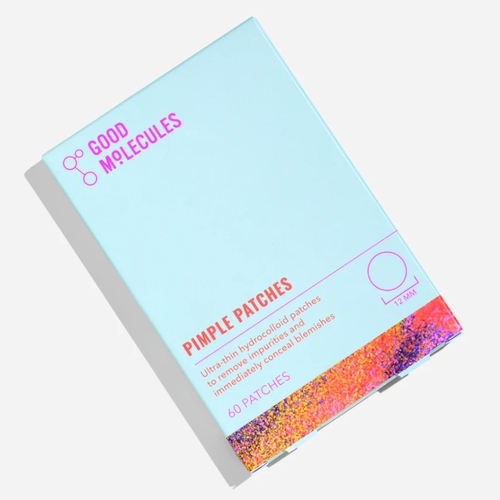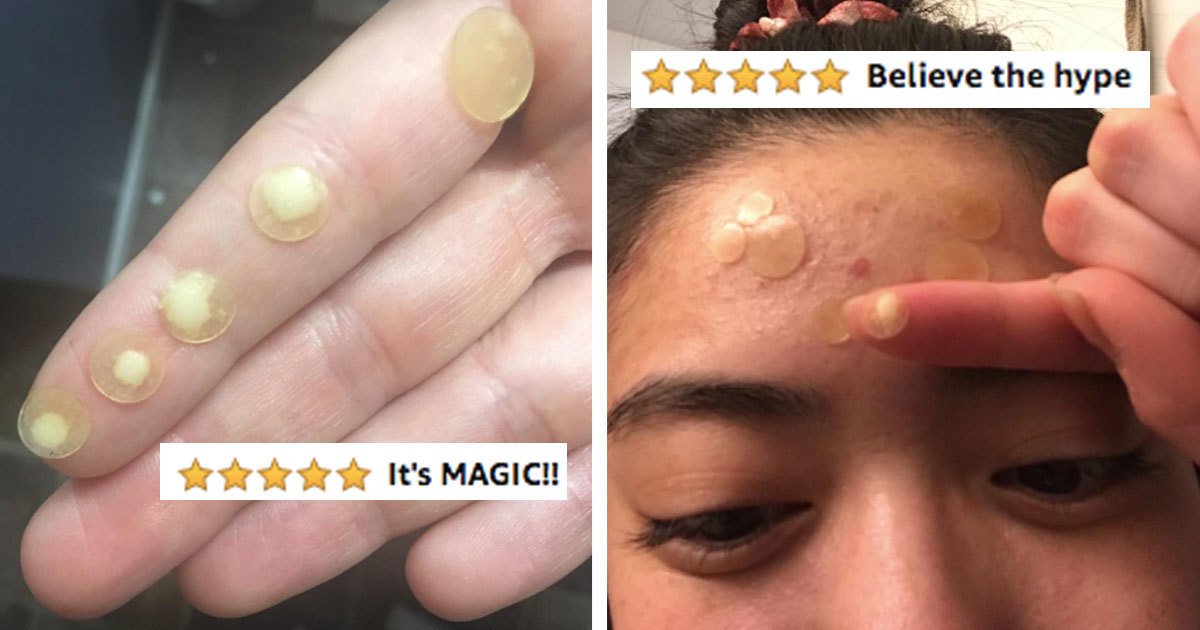Can You Reuse Pimple Patches? A Comprehensive Guide For Your Skin
Are you wondering if it's safe and effective to reuse pimple patches? Many people are curious about this skincare practice, especially as hydrocolloid patches have become a popular solution for treating acne. These patches are designed to absorb pus, reduce redness, and protect the skin from further irritation. However, reusing them might seem like a cost-effective option, but is it really a good idea? In this article, we’ll dive deep into the topic, exploring the pros and cons, hygiene concerns, and expert recommendations to help you make an informed decision.
Hydrocolloid pimple patches have revolutionized acne treatment by offering a discreet and efficient way to heal blemishes. These patches create a protective barrier that promotes faster healing while keeping bacteria at bay. But with the rising cost of skincare products, many users are asking themselves whether they can stretch their budget by reusing these patches. While the idea may sound appealing, there are several factors to consider before you decide to reuse them.
As we explore this topic, we will address the potential risks, benefits, and alternatives to reusing pimple patches. Whether you're a skincare enthusiast or simply looking for ways to optimize your skincare routine, this article will provide you with the information you need to make the best choice for your skin. Let’s get started by understanding the basics of hydrocolloid patches and their role in acne treatment.
Read also:Bollywood Cinema Unveiled Your Ultimate Guide To Hd Hub 4 U Bollywood
What Are Pimple Patches and How Do They Work?
Pimple patches, particularly hydrocolloid ones, are small adhesive patches designed to treat pimples effectively. They work by creating a moist healing environment that allows the skin to repair itself naturally. The patches absorb pus, oil, and other impurities while protecting the area from external contaminants. This process not only speeds up healing but also minimizes the risk of scarring. Understanding how these patches function is crucial to determining whether reusing them is a viable option.
Why Do People Consider Reusing Pimple Patches?
Cost-effectiveness is one of the primary reasons why individuals contemplate reusing pimple patches. High-quality hydrocolloid patches can be expensive, and frequent use can add up quickly. Additionally, some users believe that reusing patches could save resources and reduce waste. However, before jumping to conclusions, it’s essential to weigh the potential risks and benefits associated with this practice.
Can You Reuse Pimple Patches Without Compromising Hygiene?
Hygiene is a critical concern when it comes to reusing pimple patches. Once a patch has been applied to a pimple, it absorbs pus, bacteria, and other impurities from the skin. Reusing such a patch could reintroduce these contaminants, potentially worsening the condition or causing new breakouts. Experts generally advise against reusing patches for this very reason. Let’s examine this issue more closely in the following sections.
Is It Safe to Reuse Pimple Patches?
The safety of reusing pimple patches largely depends on how they are handled and stored. While some people may clean and disinfect used patches before reapplying them, this process is not foolproof. Patches that have already absorbed pus and bacteria cannot be fully sanitized, making them a breeding ground for harmful microorganisms. Reusing such patches could lead to infections or prolonged healing times.
What Happens If You Reuse a Pimple Patch?
Reusing a pimple patch can have several negative consequences. Firstly, the patch may lose its adhesive properties, making it less effective at staying in place. Secondly, the absorbed pus and bacteria could cause irritation or inflammation when reapplied to the skin. Lastly, reusing patches might delay the healing process, as the patch’s ability to absorb impurities diminishes with each use.
Can You Reuse Pimple Patches on Different Areas of the Skin?
While some users might think it’s acceptable to reuse a patch on a different area of the skin, this practice is still discouraged. Moving a used patch from one pimple to another can transfer bacteria and pus, increasing the likelihood of cross-contamination. It’s always best to use a fresh patch for each blemish to ensure optimal hygiene and effectiveness.
Read also:Why Movierulz Today Is Still A Major Concern For Film Lovers
What Are the Alternatives to Reusing Pimple Patches?
If you’re concerned about the cost of pimple patches, there are several alternatives to consider. For instance, you could opt for more affordable brands or explore other acne treatments, such as spot treatments or over-the-counter creams. Additionally, practicing good skincare habits, like cleansing and moisturizing regularly, can help prevent breakouts and reduce the need for patches altogether.
How Can You Extend the Life of Your Pimple Patches?
Although reusing pimple patches is not recommended, there are ways to make them last longer. Proper storage, for example, can help maintain the adhesive properties of unused patches. Keeping them in a cool, dry place and avoiding exposure to moisture or sunlight can prolong their shelf life. Furthermore, using patches only when necessary and following the instructions carefully can maximize their effectiveness.
Can You Reuse Pimple Patches if They Haven’t Absorbed Any Pus?
In rare cases, a pimple patch may not absorb any pus or impurities if the blemish is still in its early stages. Some users might wonder if it’s safe to reuse such a patch. While it may seem harmless, even patches that appear clean can harbor bacteria or lose their adhesive strength over time. It’s generally advisable to discard used patches and start with a fresh one for the best results.
What Are the Benefits of Using Fresh Pimple Patches?
Using fresh pimple patches offers numerous benefits, including better hygiene, improved effectiveness, and faster healing. Fresh patches have stronger adhesive properties, ensuring they stay in place longer and provide consistent protection. They also absorb pus and bacteria more efficiently, promoting a healthier healing environment. By prioritizing fresh patches, you can achieve better results and reduce the risk of complications.
How Often Should You Replace Pimple Patches?
The frequency of patch replacement depends on the severity of the pimple and the type of patch being used. Most hydrocolloid patches can be worn for 8 to 12 hours before needing to be replaced. If the patch becomes saturated with pus or loses its adhesive properties, it’s time to switch to a new one. Regularly replacing patches ensures optimal performance and minimizes the risk of infection.
Can You Reuse Pimple Patches if They Are Still Sticky?
Even if a pimple patch still feels sticky, it’s not advisable to reuse it. The adhesive may appear intact, but the patch has likely already absorbed impurities and bacteria. Reapplying a used patch could expose your skin to these contaminants, potentially leading to further breakouts or infections. Always prioritize using a fresh patch for the best outcomes.
Final Thoughts
While the idea of reusing pimple patches might seem appealing, the potential risks outweigh the benefits. Hygiene concerns, reduced effectiveness, and the possibility of reintroducing bacteria make it a practice best avoided. Instead, focus on using fresh patches and exploring cost-effective alternatives to maintain a healthy skincare routine. By prioritizing your skin’s health, you can achieve clearer, more radiant skin in the long run.
Table of Contents
- What Are Pimple Patches and How Do They Work?
- Why Do People Consider Reusing Pimple Patches?
- Can You Reuse Pimple Patches Without Compromising Hygiene?
- Is It Safe to Reuse Pimple Patches?
- What Happens If You Reuse a Pimple Patch?
- Can You Reuse Pimple Patches on Different Areas of the Skin?
- What Are the Alternatives to Reusing Pimple Patches?
- How Can You Extend the Life of Your Pimple Patches?
- Can You Reuse Pimple Patches if They Haven’t Absorbed Any Pus?
- What Are the Benefits of Using Fresh Pimple Patches?
Article Recommendations


